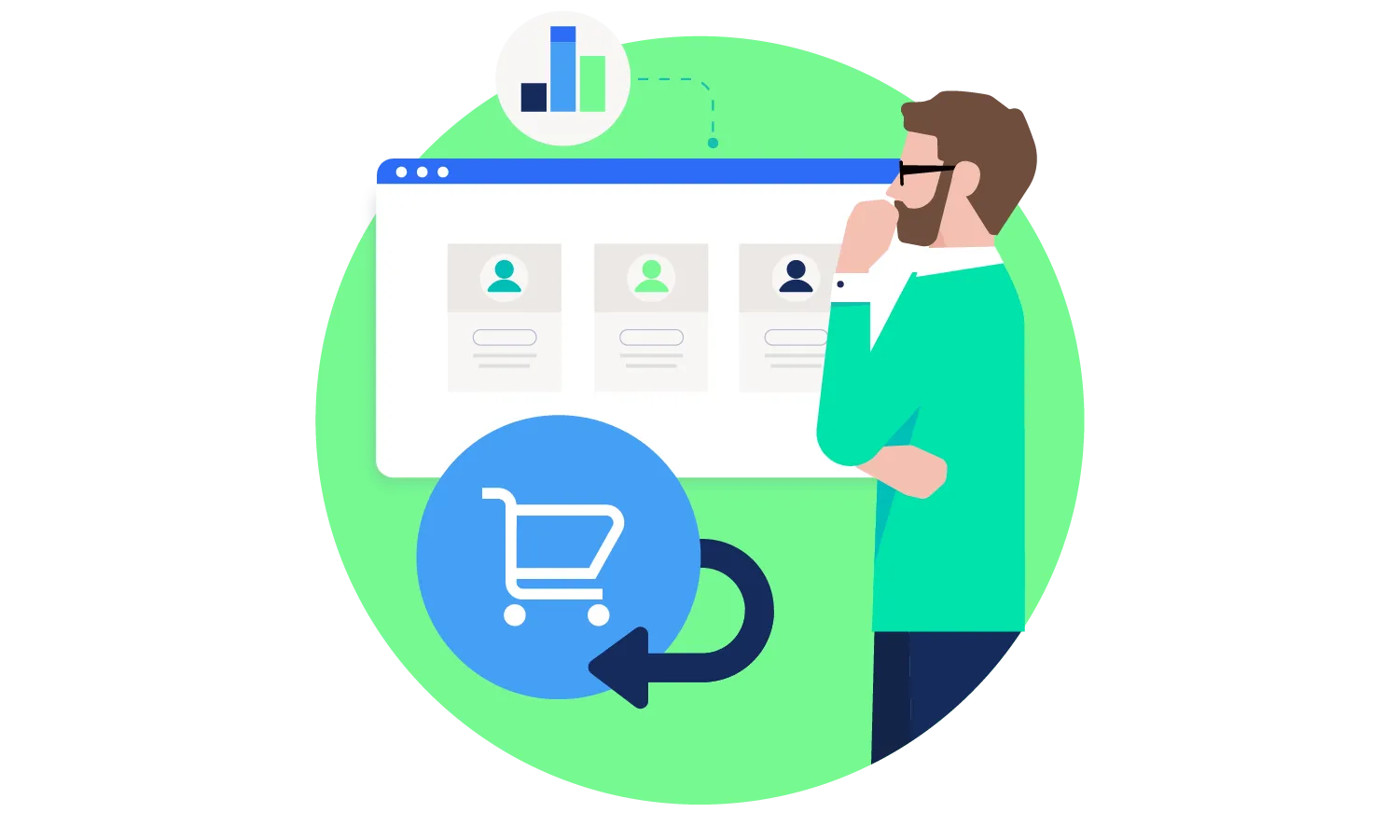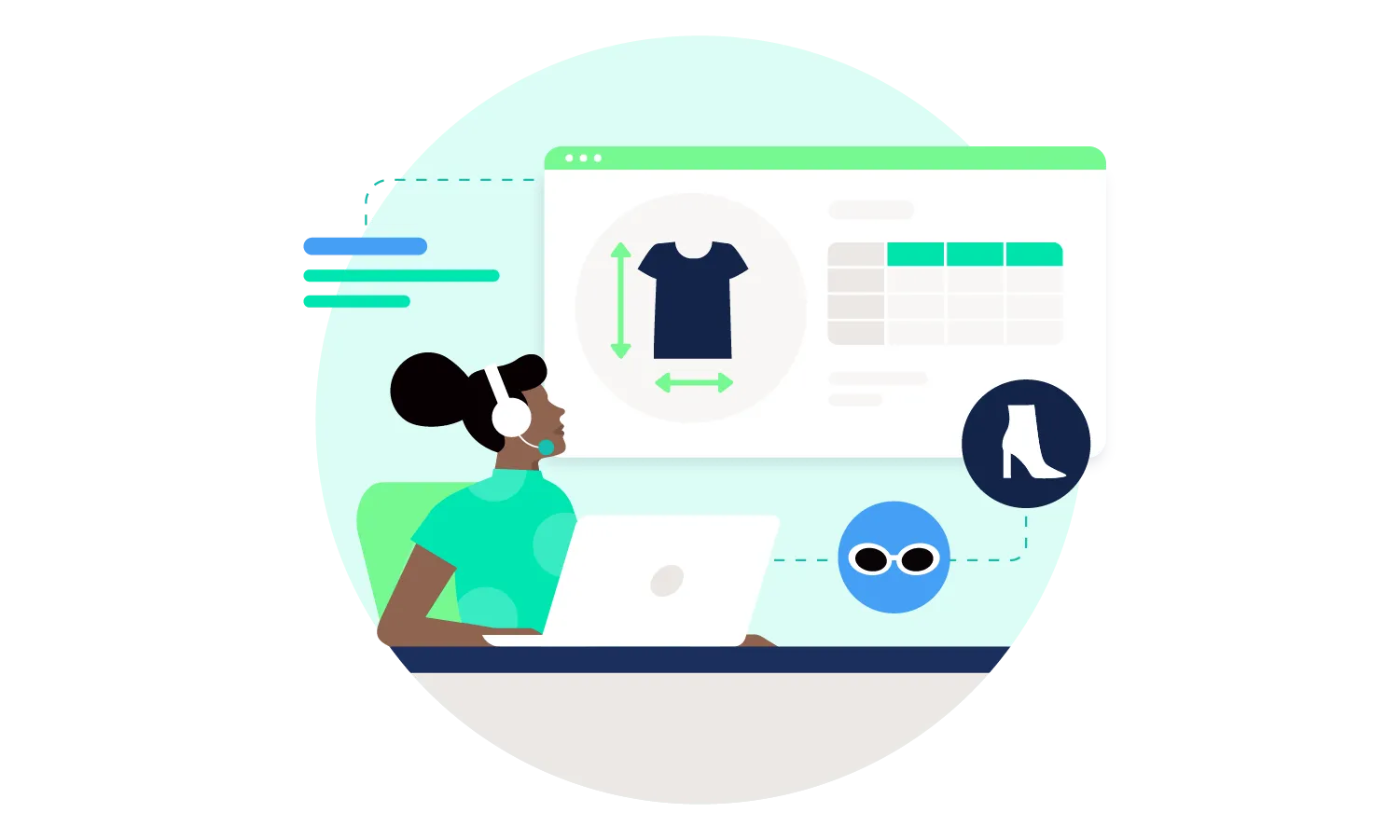March 18, 2021
How to reduce online returns and increase your margins
As ecommerce has grown, so too have return rates. Returning products is a hassle for customers and costly for businesses, so reducing your return rate is beneficial for everyone. Here are 5 actionable tips for keeping your return rates low to streamline the customer experience and maintain healthy profit margins.

Returns have caused a dilemma in the ecommerce world.
Offering a free, flexible, and streamlined return policy has a positive impact on the overall customer experience—and is now the minimum standard that has been set by ecommerce giants like Amazon. A generous and well-executed return policy can encourage conversions and drive growth, and customers will be more likely to take a chance on new products or brands if they know the return process will be simple.
On the other hand, many shoppers admit to ordering multiple styles of the same product with the explicit intention of inspecting them in person and returning the ones they don’t like. These “serial returners,” in concert with the many other types of customers who drive up return rates, wreak havoc on profit margins. The many costs associated with the return process—including shipping costs, the time cost of inspecting and restocking the item for resale, the lost cost of the initial sale, and the reputational cost of an unhappy customer—have the potential to erode the profitability of your ecommerce business if they get out of control.
Returns will always be a “necessary evil” of the ecommerce world, but that doesn’t mean that you need to let them run rampant. By taking a customer-centric approach to all of your ecommerce activities, you can streamline the customer experience, target prospects more likely to be satisfied with their purchase, and avoid wasting ad spend on audiences likely to become “serial returners” with low or even negative margins.
Here are 5 strategies for keeping return rates low, maintaining robust profit margins, and most importantly, strengthening relationships with your most valuable customers.
5 strategies for minimizing return rates
1. Send out a post-return survey to understand the reasons behind returns and use that insight to make improvements where needed.

Customers return products for a wide variety of reasons. Beyond the “serial returners” mentioned above, customers may return products because:
- The customer received the wrong size, style, or color.
- The product was defective or broken by the time they received it.
- The product didn’t look like the picture on the website.
- The website description didn’t accurately depict the product.
- The order arrived too late for the occasion for which it was purchased.
- The product was a gift that the recipient didn’t want.
- The customer ordered the product by accident.
- The customer found a similar product for a lower price elsewhere.
- The customer changed their mind.
The only way to decipher the exact reason for a return is to ask the customer. By deploying a post-return survey to collect customer feedback in the form of zero-party data, you can identify opportunities for improving the product and the shopping experience as a whole to mitigate the need for returns in the first place.
For example, if the majority of customers cite incorrect sizing as the reason for their returns, then you may need to revisit the sizing guides on your website to ensure their clarity. Or, if your customers are consistently returning a product because the price is too high for the product’s perceived value, then you may need to revise your pricing strategy or reconsider the value-based messages you use to market these products online.
When you develop and execute these surveys from within a Customer Data Platform (CDP) using a secure form builder tool like Lexer’s, you can attach each survey response as an attribute to individual customer profiles. In doing so, your team can access an organized, customer-centric view of the entire ecommerce experience. With this customer insight, you can tailor your customer engagement strategies to reduce the prevalence of returns.
2. Use customer analytics to segment customers by return rates, and suppress frequent returners from targeting.

Customer analytics and segmentation tools can help you enhance every aspect of your business, including online returns.
By segmenting your customers by return rates, you can explore the behaviors and characteristics that differentiate frequent returners from infrequent returners. For example, you might look at your data to learn:
- Who are my serial returners and are they profitable?
- How likely are customers to return products based on their NPS score?
- Which products and categories do customers most frequently return?
- Which customer persona segments are most likely to return products?
Once you understand who are your serial returners or which segments are most likely to become “serial returners” who erode your profit margins, you can use audience suppression to suppress those segments from campaigns. If you avoid targeting those audiences in the first place, then you can save a significant amount of time, money, and effort from being wasted on the return process.
Effective customer analytics requires the right tools and techniques, however. To assess your business’s customer analytics maturity, click here.
3. Offer a clear and easily accessible sizing guide and/or Live Chat option on the website.

In the fashion and apparel industry, one of the most common reasons for ecommerce returns is improper sizing.
It’s understandable, with inconsistent sizing practices across different brands and types of apparel, as well as varying body shapes among customers of the same size, that size and fit would be such a widespread cause for online returns. Without the ability to try the product on before purchasing, even customers who do explore the sizing details provided on your website may struggle to select the correct size and fit for themselves. This is one of the many possible hiccups in the customer experience that could lead to low-performing omnichannel metrics such as lifetime value, repurchase rates, and customer satisfaction.
To combat sizing issues, it’s important that you offer the most accurate and comprehensive sizing guide as possible and ensure that it’s easy to find on your website. If you sell your products in multiple countries, make sure you offer comparative sizing guides to make it as easy as possible for customers to identify the sizing metrics they’re familiar with.
Even outside of the apparel industry, the importance of precise and accurate product depictions still stands. Make sure the photos and descriptions you offer on your website are wholly representative of the product as-is, including the fine details of its colors, textures, sizes, stitching, and more, to prevent customer confusion or misunderstanding.
Another way to combat sizing challenges is to offer a Live Chat option on your website that connects shoppers with fit consultants or experts. In the rapid shift to ecommerce, many businesses have rebranded their customer service teams as “Fit Experts” to better serve customer needs.
4. Use proactive outreach and engagement to intercept sales with a high likelihood of return and streamline the customer experience.

One of the best ways to reduce return rates is through proactive outreach and engagement.
Digging into a CDP like Lexer, you can identify customers with suspicious order behaviors that indicate a high likelihood of a return and proactively message them before shipping the product. For example, if a customer purchases the same product in two different sizes, you could send them a quick message to ask if they’re both for the same individual and whether or not they’re worried about sizing; if so, would they like to speak for a few minutes with a member of the customer service team to talk about fit?
Some brands have taken this strategy to the next level by rebranding their customer service teams as “Fit Experts.” By proactively identifying recurring features of purchases that lead to returns, your service team can engage customers prior to shipping to deter sales that would ultimately result in a return and direct customers toward better fitting products. This human, one-to-one approach adds value and special care to your customers and gives them the opportunity to ask questions about product features, sizing, use cases, return policies, and more.
For more information about this proactive outreach and engagement process, click here.
5. Encourage customers to leave product reviews.

Product reviews, instagram photos, customer forums, and other types of user-generated content are incredibly powerful tools for reducing return rates and increasing customer satisfaction.
Reviews give shoppers another avenue to explore when considering new products, providing social proof of the product’s quality, fit, and value. They also serve the purpose of strengthening customer satisfaction by offering styling suggestions and ideas for getting the most out of the product from other happy customers. By offering additional information about the product from real customers, reviews add another layer of genuine, human-to-human engagement to the ecommerce experience. For all of these reasons, a robust and active review section of your website or social media presence will chip away at needlessly high return rates.
But how do you encourage customers to engage through reviews and social posts? One way is by offering incentives like product add-ons, free shipping on the next purchase, or access to exclusive content in exchange for leaving a review.
Avoid excessive returns by offering your customers a personalized experience from day one
Ultimately, the best and most effective strategy for reducing return rates is to know your customer.
By using customer analytics to understand exactly who your best customers are, how they shop, which products they shop for, and what they expect from an exceptional customer experience, you can tailor your end-to-end business strategies to ensure satisfaction, profitability, and long-term loyalty.
Interested in understanding, engaging, and serving your customers better? Use the meeting link below to book a demo of the Lexer platform today.
Speak with our retail experts

